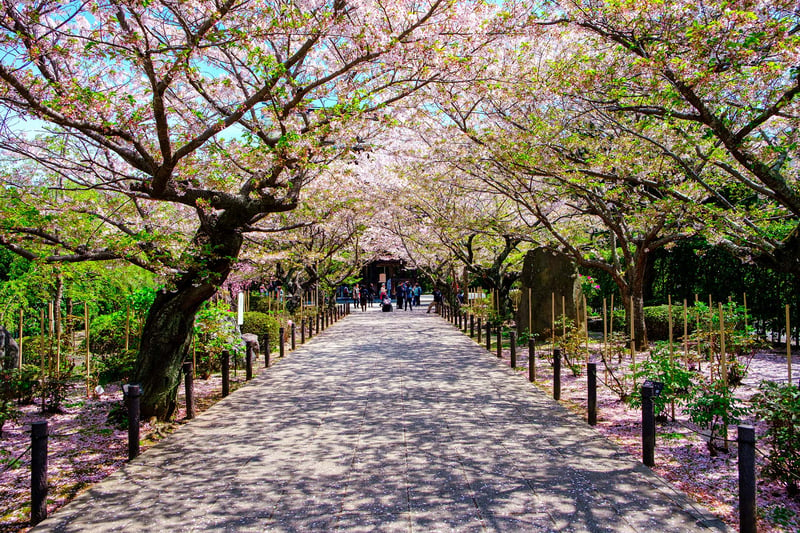
In the land of the rising sun
Travel journal of my adventure in my first ever asian country, Japan.
•
12 min read
I arrived in Japan a few hours ago. Now I stand in front of the first Torii I have ever seen. I bow and hurry to catch up with Filippo, a dear friend of mine and my guide in this journey, who has already started running ahead.
But first, let’s take a step back.
Chapter One
After flying over Eastern Europe, a myriad of “-stan” countries, and China, I finally land in Japan. There were some turbulences during the landing, which had the amusing effect of mixing up the peppers Lufthansa served me for breakfast. A few more minutes and I would have left a Picasso on the plane’s floor.
After passing through border control, I begin to admire this new, strange country for the first time. The airport staff walk around with bells tied to their belts so they don’t have to announce their passage through the crowd of travelers.
Irene shows us her Eki stamp book; the ink on the page is still fresh. I immediately ask where the mythical first stamp is located. How naive I was, still unaware that this simple act would turn into a burden for the rest of the trip.
Before leaving the airport, our coordinator Filippo has us install the travel card app on our phones to access public transport. In a moment that reminded me of the first time I played Pokémon, I had to choose my starter between Suica, Icoca, and Pasmo. In the end, just like in the game, I chose the blue starter, and Icoca’s cool penguin became the background of the rest of my journey.
And here I am, as I was saying, standing before the first of the countless Torii I’ll encounter on this trip.
Torii are gates; they mark the boundary between the mundane and the Sacred. When you pass through them, you must bow. There are wooden ones, stone ones, red ones; some ancient and others brand new. You never know if you’ll find another Torii around the corner; the only thing you know is that when you see one, you’re near something sacred.
So I invite you to symbolically cross this Torii I’ve photographed, and join me in discovering a country that, even in the smallest things, presents itself as a world of its own.
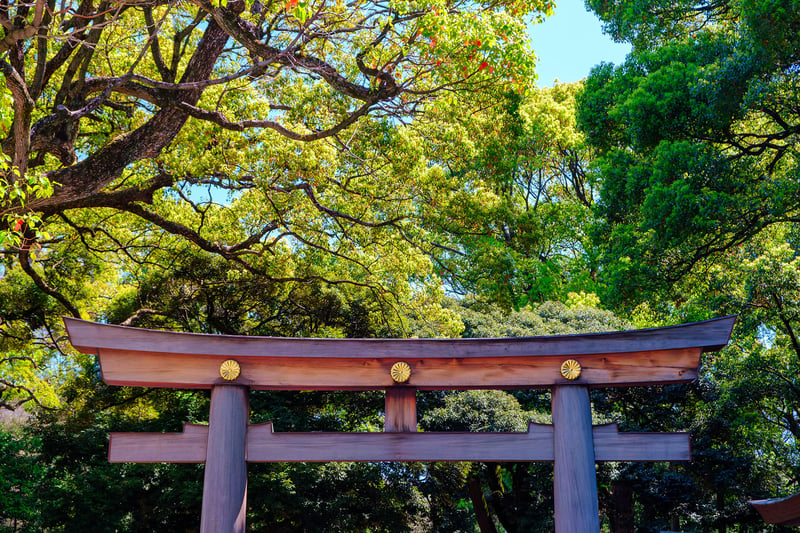
Chapter Two
I’m walking along the path full of cherry blossoms in Ueno Park. The day isn’t the best, the sun is missing, but the impact of this cherry blossom-lined path is not diminished at all. I’ve been lucky: the day before I arrived, the cherry blossoms in Tokyo finally bloomed. Nowadays, due to global warming caused by us, the blooming is happening earlier and earlier. This year, due to an unusual frost, the cherry blossoms in Tokyo bloomed during their historically “correct” period.
When the cherry blossoms bloom, the Hanami season begins, which is one of those words that makes you realize how different Japanese culture is from ours. Hanami, in fact, means “flower viewing” and refers to the Japanese custom of admiring the fleeting beauty of flowers; it’s an act so deeply ingrained in their culture that it has its own dedicated word.
For modern Japanese people, Hanami consists of having a picnic with friends or family, sitting on the grass surrounded by Sakura.
The very short life of the Sakura, which lose all their flowers in just a couple of weeks, is at the heart of the Hanami practice: this transience perfectly reflects the Japanese philosophy of mono no aware, which means “the pathos of things,” celebrating the delicate balance between the joy of beauty and the melancholy of nature’s impermanence.
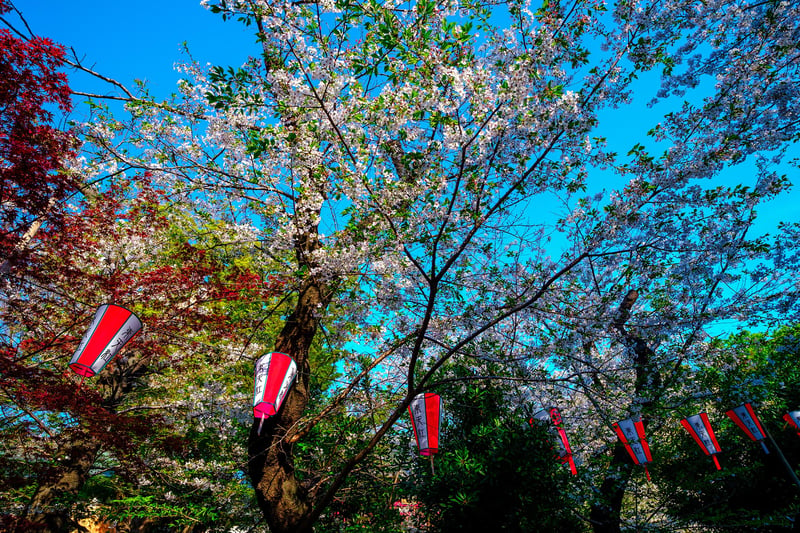
Chapter Three
I am lit up with immense light, walking through the streets of Tokyo at night.
I had entered a restaurant just before sunset to eat some Tonkatsu (spoiler: it’s amazing), and when I came out, the street was brighter than when I had left it.
I look up and can’t see a single star in the sky, not even a familiar constellation; the only celestial bodies that manage to shyly show themselves are the Moon and the planets.
Since in Japan businesses are everywhere, even on the upper floors of buildings, and there are often so many (all very small), the only way to let people know they’re there is to put up a bright sign on the building’s facade with the name and the floor where the business is located. It doesn’t take much for the streets to turn into a chaotic mess of neon signs.
And then there’s the crowd. Especially in Tokyo, the streets are full of people—they never end. There’s a constant flow of people that I don’t think I’ve ever seen, even in major European cities. After all, with its 32 million inhabitants, Tokyo is currently the most populous city in the world. You can definitely feel it.
Despite this, I can walk more easily in Tokyo amid 32 million people than in Matera at night, when there are maybe 300 people strolling around. Maybe there’s an anthropological lesson here, but I’m too fascinated by the lights of Tokyo to think about it.
I’ve just noticed that there’s a Godzilla staring at me from above the IMAX cinema in Shinjuku, I’ve got to go.
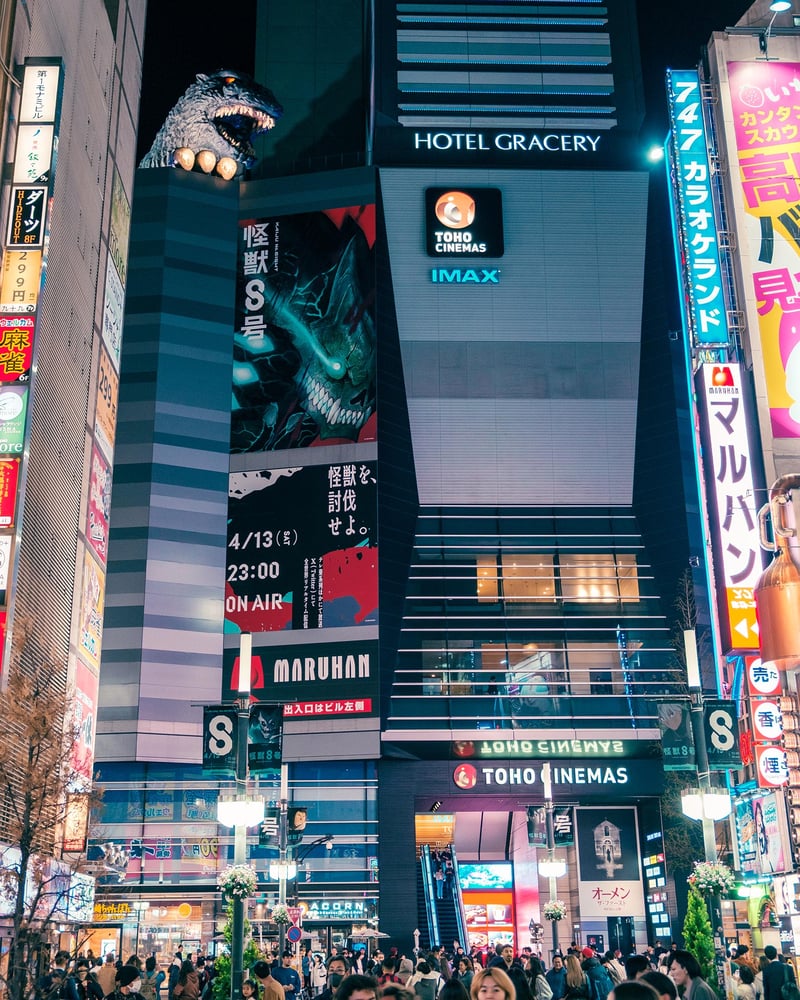
Chapter Four
When I enter a temple in Japan, I feel like when I eat an Okonomiyaki: I love it like crazy, but I have no idea what’s inside.
Okonomiyaki is one of the dishes I’ve enjoyed the most in Japanese cuisine. It’s a sort of pancake filled with whatever you’ve got; the name, in fact, translates to “whatever you like, grilled.” Basically, it’s Japan’s version of the fridge-cleaning dish. And it’s out of this world.
The two main religions in Japan are Buddhism and Shintoism, but they aren’t experienced as two separate paths. In fact, there is a tendency to blend elements of both in a practice called Shinbutsu shūgō, which literally means “the fusion of Kami and Buddha.”
So in Japan, it’s perfectly plausible to find yourself walking through Kenchō-ji temple, the oldest Zen training monastery in Japan, where you first encounter a Buddha statue and then, right after, some Karasu-tengu, which are typical Shinto guardians. Usually, they accompany the Kami (Shinto deities), but in this case, they guard the Daigongen, which is a manifestation of Buddha in the form of a Kami. In short, it’s a real mix, or rather, an Okonomiyaki, of different elements.
This syncretism originated as soon as Buddhism was imported into Japan: rather than abandoning their own culture, the Japanese embraced the new and found a way to make both religions coexist. When culture blends, it doesn’t get diluted or lost; it creates something new and broader. We should always keep that in mind when we interact with people and ways of life that are different from our own.
I’m starting to get hungry again, it’s time for another Okonomiyaki.
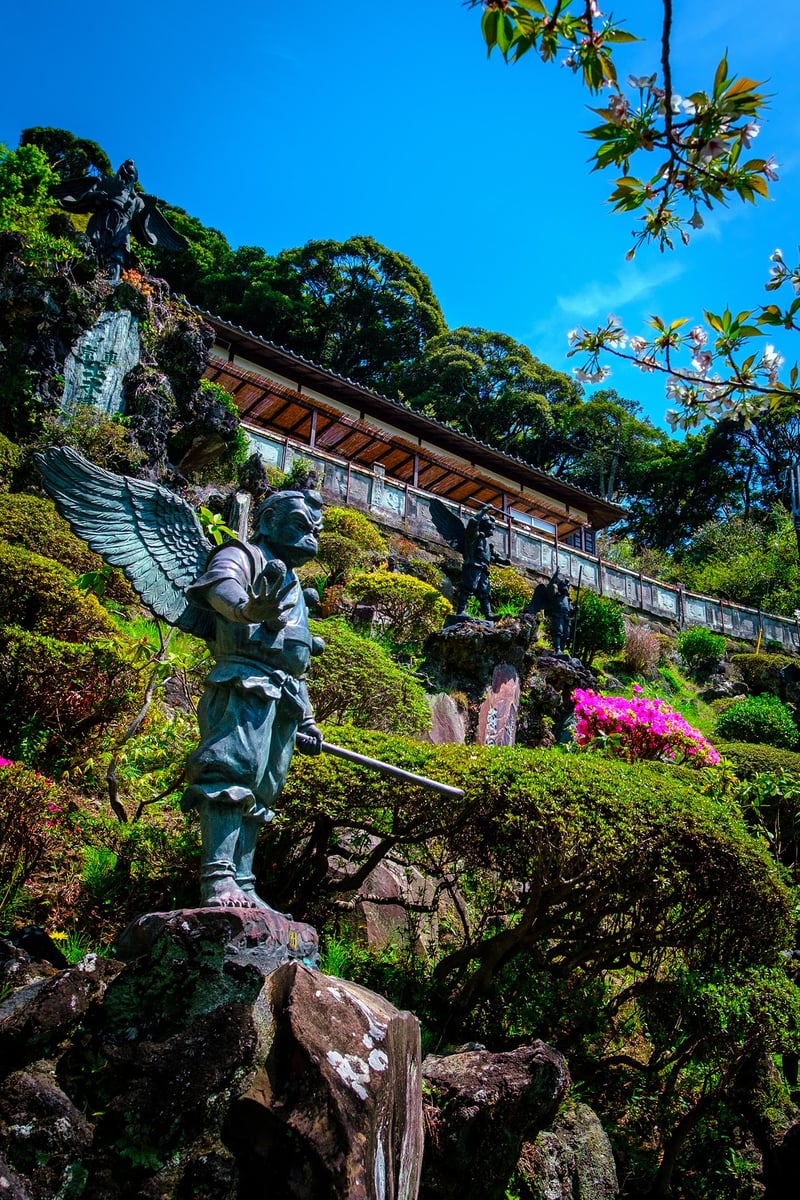
Chapter Five
After a feast of street food on the streets of Kamakura, I head towards the beach. I’m very excited, I’m about to see the Pacific Ocean for the first time, and I can’t contain myself.
While I’m standing there watching the waves, a sound catches my attention: it’s the sound of an engine being started. I turn around and notice this man, whom I’ll now call Porco Rosso, laying out a parachute on the sand and strapping on a motorized propeller. After carefully spreading out the parachute, he waits for the right gust of wind to take off.
At one point, he starts running, the parachute fills with air and lifts off the ground, and the hum of the motorized propeller intensifies. He’s about to take off when the parachute deflates, falls back down, and the man who was just running stops, starting to gather everything to return to the starting position.
After about half an hour and several unsuccessful attempts, I sit down on the sand to rest. I’m almost about to close my eyes when I feel a gust of wind brush my face, and the sound of the motorized propeller changes pitch. I turn around abruptly and see Porco Rosso a meter above the ground, just having taken off.
You did it, you crazy Sir on a beach, you did it!
All of us, being the good Italians that we are, erupt in a roar of cheers and applause for our flying man, while all the Japanese around us aren’t sure whether to look at him or us.
After flying over the entire beach, Porco Rosso soars above our heads as a sign of acknowledgment for our cheers, and we once again applaud and celebrate. Then the man lands in front of us, dismounts from the paramotor, and comes over to meet us and chat for a bit.
With the help of Google Translate and hand gestures, he explains that he built that paramotor himself, starting from parts of a moped. He tells us about his passion and the thrill he feels when flying over the sea.
After a good half hour of chatting, he pulls out an old camera from his backpack and asks if we can take a picture together. After the snapshot, we say our goodbyes, and he leaves us with just one phrase: “I’m happy”.
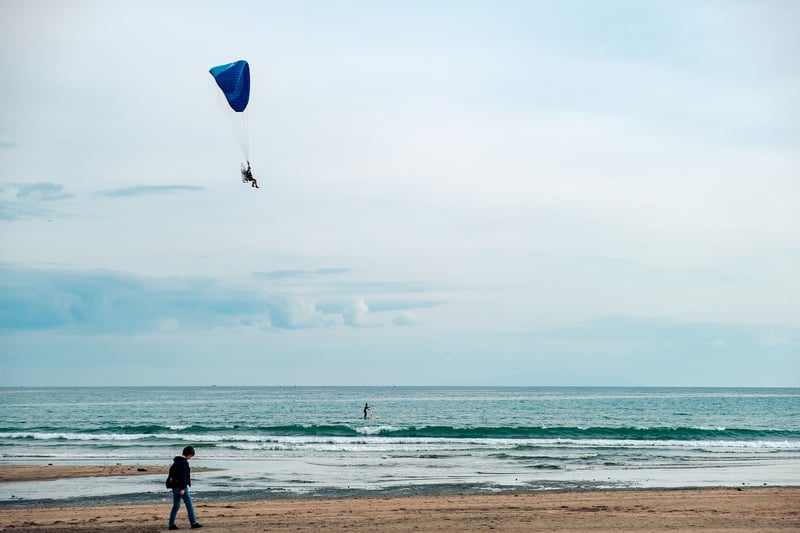
Chapter Six
The practice of Shoko involves burning powdered incense inside a cauldron.
It’s a ritual performed during the morning prayer, and it serves as a way to remember one’s ancestors, who are a fundamental part of Buddhism. They are so important that the monk officiating the service, in what we could call his “sermon” before the Shoko, reminded us that we are all the result of our ancestors: we carry them within us at all times.
Just look back 10 generations, and we have over a thousand ancestors. If we go back 30 generations, our ancestors number over a billion.
As a programmer, I should have realized this on my own, since it’s just powers of 2, but I had never thought about it in these terms.
So, as I’m here, sprinkling a pinch of incense into the brazier, bowing before three chanting monks, I take a moment to think of all my grandparents; unfortunately, I haven’t had any of them for a few years now. I miss spending time with them.
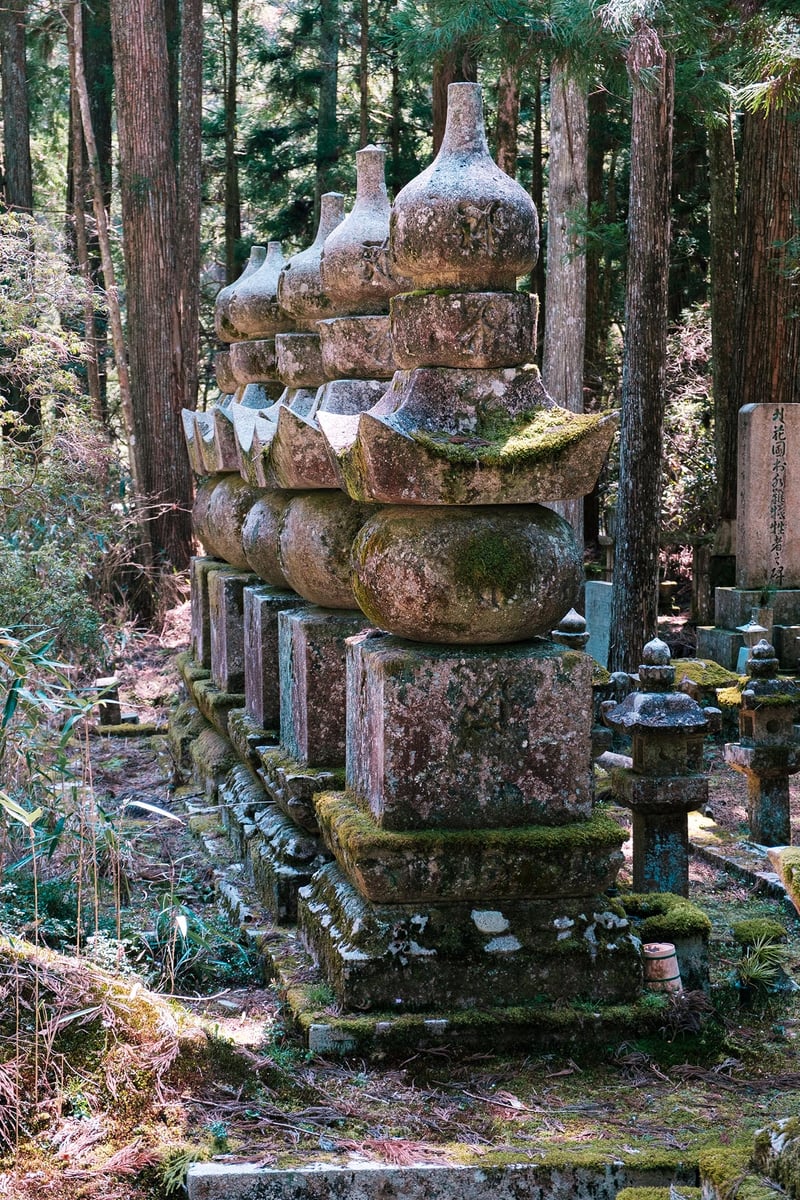
Chapter Seven
The sutras written on the prayer wheels accompanying the ascent to Daisho-in temple spin one after the other as my hand passes over them. It is said that turning the wheels is equivalent to reading the sutras inscribed on them, thus bringing the same blessing. It’s a great thing for illiterates like me and, even better, incredibly fun.
Daisho-in temple, located on Mount Misen in Miyajima, is without a doubt the most beautiful temple I’ve seen during this trip. It rises mostly vertically, following the mountain’s shape, and includes numerous halls and shrines scattered across a spacious courtyard, accompanied by a waterfall. The serenity I felt here is indescribable.
Near the top of the temple is a hall, the Henjokutsu cave (which, I’ll tell you, by my Matera standards, is not very cave-like), where there are 88 statues of Buddha representing the 88 temples that are part of the Shikoku pilgrimage. It is said that following the path marked on the ground and passing in front of each statue grants the same blessing as visiting all 88 temples. I love the convenient practicality of Japanese Buddhism.
Above the cave is the Ichigandaishi, where there are dozens of small Buddha statues, and it is believed that here, at the temple’s peak, the wishes of the faithful always come true. Yet, now I find myself back in Italy, so something must have gone wrong with the forwarding of my request to the wish office.
Another reason I love this temple is the presence of hundreds of amusing statues scattered throughout the courtyard. This guardian with the big nose, at the base of a staircase, is probably my favorite.
After visiting the temple, we enjoyed the sunset with a view of the magnificent Miyajima Torii, and finally, in the evening, we had a lovely picnic by the sea. Apart from the moment of panic when a deer jumped the fence and tried to steal our food, it was a magical and peaceful picnic, between the stars and the waves.
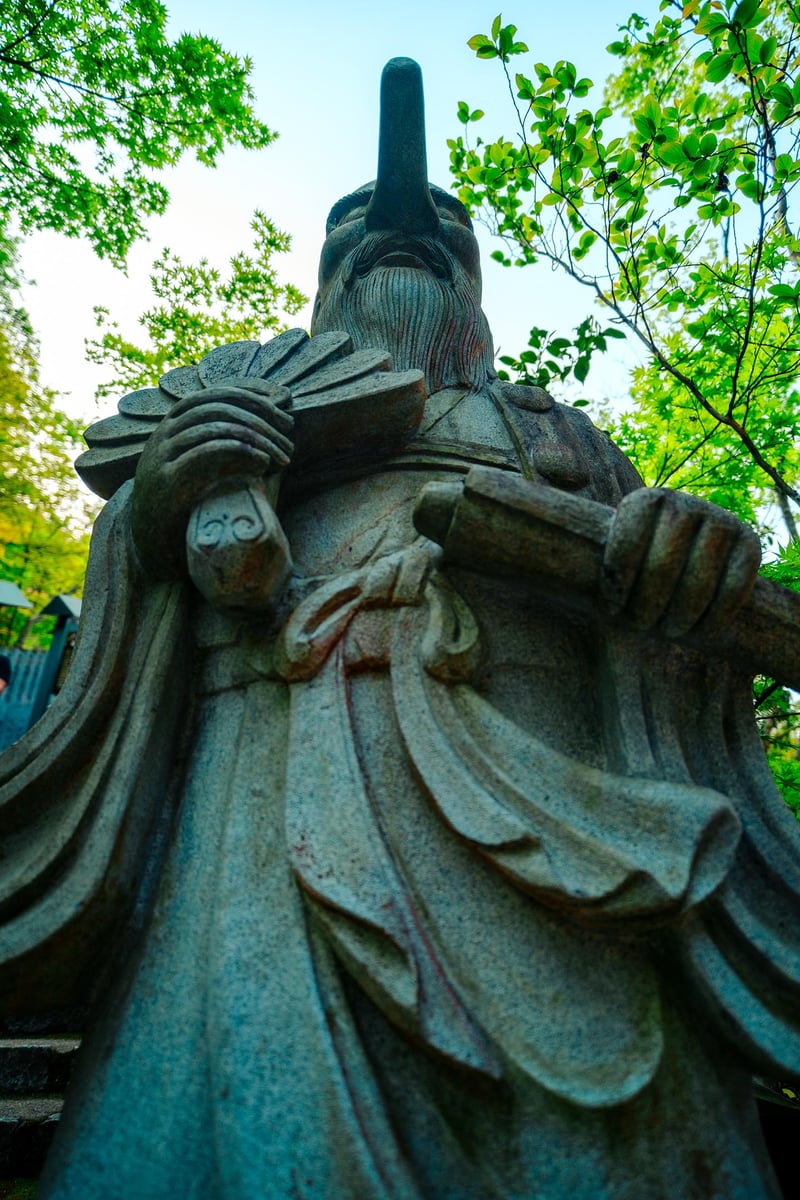
Chapter Eight
I’m nearing the end of my journey and this story, but before sharing my conclusions, I’d like to reflect on a theme that has run through my entire stay in Japan: the impact we tourists have on the places we visit.
Growing up in Matera, I saw firsthand how a city can transform from a forgotten destination to a world-renowned hotspot. I watched the streets where I used to play soccer with my brother fill up so much with tourists that we had to give up those summer games. I witnessed the entire historic center being repurposed, from a place inhabited by Materans to a playground for tourists.
Due to a combination of political and economic factors, Japan recorded the highest influx of tourists in its history last year, causing many problems for the local population. One story that made headlines was about a city that, in an attempt to discourage tourists from crowding the Lawson supermarket parking lot to get the perfect Instagram shot, decided to put up a barrier that obstructs the spectacular view of Mount Fuji behind the store.
Japan’s extraordinary aesthetic beauty makes it the perfect place to collect Instagrammable photos and videos, leading to the emulation of this or that reel seen on social media.
I believe that as tourists, it’s important to try not to spoil the places we visit; otherwise, the very meaning of the visit is lost. Lastly, as a photographer, I think the most important thing to keep in mind is to be as transparent and discreet as possible. If that’s not possible, then it’s best to put the camera away.
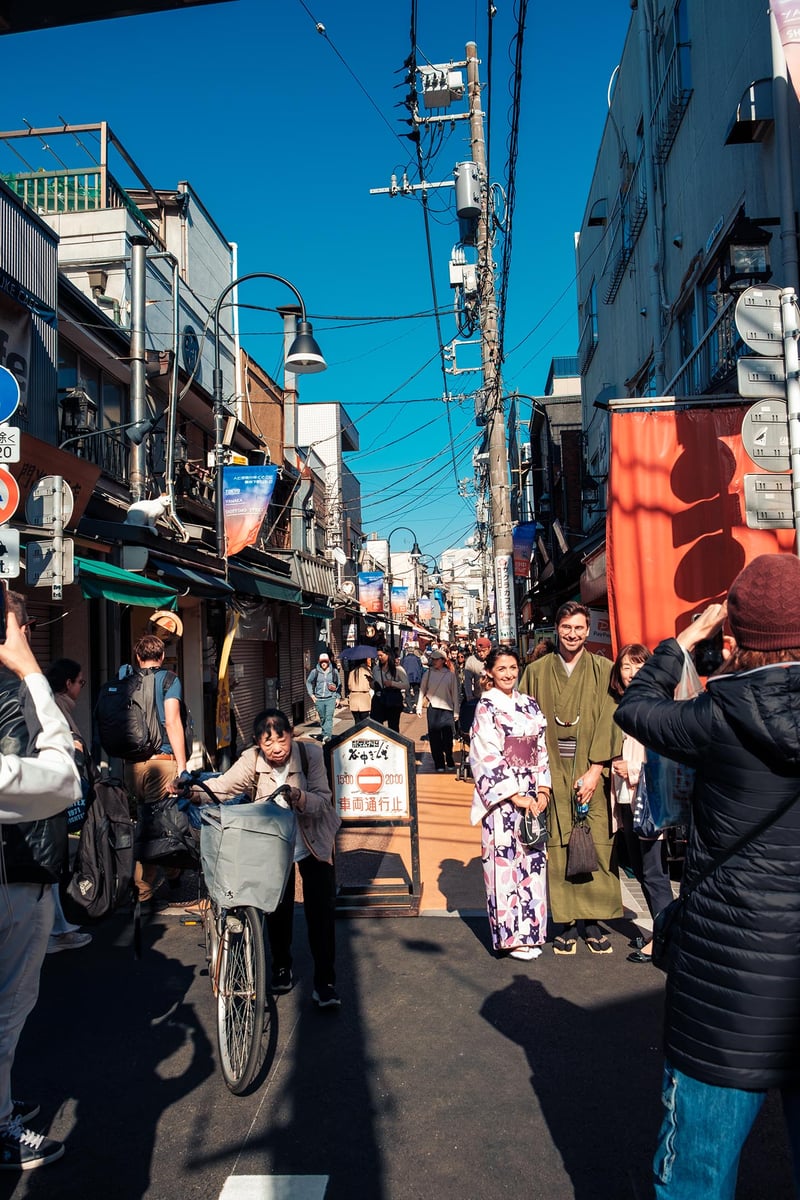
Epilogue
I can hardly believe it’s over. In 14 hours I’ll be in Vienna, and then off to Milan. There’s a lady sitting next to Filippo who’s decided to test the stability of the airplane by ordering a coffee, an orange juice, some water, and another drink, and she’s holding them all at the same time on her tray table. Filippo is sweating bullets; a bit of turbulence shakes the plane, and he’s almost about to take an unintended shower. Finally, the lady decides to drink all those beverages.